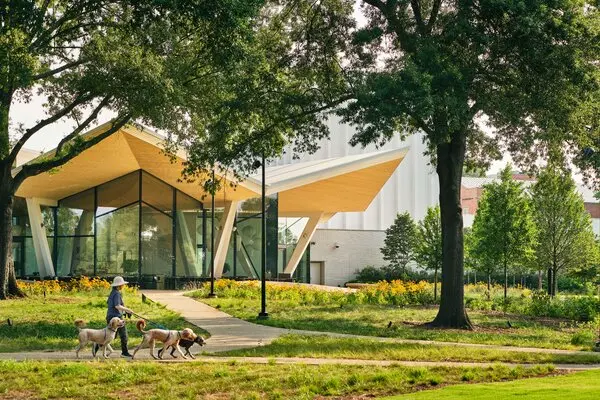Designing Outdoor Spaces That Last: The Art and Science of Landscape Building

When we think of home or commercial property design, interiors often steal the spotlight. Yet, the first impression of any property is made before anyone walks through the door. The landscape—the shape of the land, the placement of plants, the texture of the landscape—sets the tone for everything that follows. An inviting, well-planned outdoor area can dramatically improve the look, function, and value of a property.
The creation of these spaces is more than simple gardening or planting trees. It involves deliberate planning, skilled execution, and a deep understanding of how nature and construction interact. This process is known as landscape construction in Windermere, a multidisciplinary practice that combines elements of design, architecture, horticulture, and engineering.
In this article, we explore what this field involves, how it differs from landscaping, the essential stages of a successful project, and why investing in outdoor transformation offers long-term value.
Understanding the Scope of Modern Outdoor Design
Landscaping and landscape construction are often used interchangeably, but they aren’t quite the same. Landscaping typically refers to ongoing care—mowing lawns, trimming hedges, planting flowers, and seasonal cleanups. It focuses on maintaining what already exists.
On the other hand, landscape construction involves physically building new outdoor elements or substantially altering existing ones. This includes everything from grading land to installing patios, pathways, retaining walls, water features, irrigation systems, outdoor kitchens, lighting, and more. It’s about turning an empty or outdated yard into a cohesive, usable, and aesthetically pleasing environment.
This process may also include site preparation, demolition, soil testing, and dealing with drainage or elevation challenges. The goal is to create a space that is not only beautiful but also durable, functional, and sustainable.
The Key Elements of Outdoor Construction
A well-executed outdoor space is a blend of both softscape and hardscape elements. Understanding the core components that go into a successful build can help property owners and developers make better decisions during planning and execution.
1. Hardscape Features
Hardscape includes the “non-living” parts of your landscape. These are typically built with stone, wood, concrete, metal, or composite materials. Common hardscape elements include:
- Patios and Decks: Provide spaces for entertaining or relaxing.
- Pathways and Walkways: Guide movement and connect different areas.
- Retaining Walls: Manage slopes and prevent erosion.
- Pergolas and Gazebos: Offer shade and architectural interest.
- Driveways and Entryways: Combine functionality with curb appeal.
- Fire Pits and Outdoor Fireplaces: Extend the usability of your space into cooler months.
Proper installation of hardscape features requires technical knowledge of materials, drainage, grading, and local building codes.
2. Softscape Design
Softscape refers to the living elements—plants, trees, grass, shrubs, and soil. These elements provide natural beauty, help control temperature, absorb noise, and support biodiversity. In a constructed landscape, softscape decisions must complement the hardscape in both style and scale.
Plant selection is critical. It must consider factors like:
- Soil conditions
- Water availability
- Maintenance level
- Growth patterns
- Seasonal changes
- Sun and shade exposure
Combining native plants with strategic placement can reduce maintenance while enhancing visual appeal.
3. Irrigation and Drainage
An often-overlooked aspect of construction is water management. A successful design includes proper grading to prevent standing water, erosion, or root damage. Irrigation systems are integrated to ensure consistent watering, especially in drier climates or large spaces. Drip systems, sprinkler zones, and moisture sensors help balance efficiency with sustainability.
4. Lighting and Electrical
Lighting increases functionality and safety while adding visual interest. Uplighting can accentuate trees and architecture; pathway lighting ensures safe passage at night; and integrated LED systems can set moods for different times of day or events.
Outdoor electrical wiring must be weatherproof, up to code, and often involves working with electricians to connect fixtures, sound systems, or security components.
The Process of Transforming Outdoor Spaces
While every project is unique, there is a general process that ensures successful landscape development. Whether a homeowner is reimagining a backyard or a commercial developer is preparing a large site, these stages are common across most projects.
1. Initial Consultation and Site Evaluation
The first step is understanding the space—its dimensions, existing features, soil type, sun exposure, drainage patterns, and more. A designer or contractor will also gather input from the client about goals, needs, aesthetic preferences, and budget.
2. Conceptual and Technical Design
Using site data, the design team creates a master plan. This may involve sketches, 3D renderings, planting schedules, and construction documents. It’s crucial that the design be both artistic and practical. Materials are selected, structures planned, and timelines estimated.
3. Permits and Approvals
Depending on the scope, permits may be required for excavation, electrical, water use, and structural elements. Working with experienced professionals ensures that all legal and safety requirements are met before construction begins.
4. Site Preparation and Demolition
Before anything can be built, the site must be cleared and prepared. This might involve removing old structures, grading soil, installing erosion control measures, or marking utility lines.
5. Construction and Installation
This is where the real transformation happens. Hardscape structures are built, irrigation and lighting are installed, and planting begins. Skilled labor is essential at this stage to ensure long-lasting results.
6. Final Walkthrough and Maintenance Planning
Once construction is complete, the contractor will walk the client through the finished space, explaining maintenance needs and any operational features (like lighting timers or irrigation controls). Many companies offer ongoing care or recommend a maintenance provider.
Benefits of Investing in Outdoor Construction
Whether the project is residential or commercial, investing in outdoor transformation offers tangible and intangible benefits:
1. Increased Property Value
Well-designed outdoor areas can significantly raise a property’s market value. Potential buyers often view them as an extension of living space.
2. Improved Functionality
Outdoor kitchens, play areas, entertainment spaces, and shaded seating provide year-round usability.
3. Environmental Impact
Thoughtful design can reduce erosion, support native plant life, conserve water, and even mitigate temperature extremes through shade and windbreaks.
4. Enhanced Aesthetics and Enjoyment
There’s a real psychological benefit to being in beautiful surroundings. Whether you’re hosting friends or enjoying a quiet evening, a well-constructed landscape enhances quality of life.
Challenges and Considerations
While the benefits are numerous, landscape construction also comes with challenges. Understanding these in advance can help mitigate risk and ensure a smoother experience.
- Budget Overruns: Changes to the scope or material costs can add up. Accurate initial estimates and contingency planning are crucial.
- Weather Delays: Outdoor projects are highly susceptible to weather. Planning the timeline with some flexibility helps.
- Soil and Site Surprises: Sometimes the ground reveals issues—like poor drainage or unstable slopes—that require redesign.
- Sustainability: Choosing environmentally responsible materials and methods requires diligence but pays off in long-term performance and ecological health.
Long-Term Care and Longevity
Landscape construction isn’t a “set it and forget it” situation. To preserve its beauty and functionality, ongoing care is needed. This includes:
- Seasonal trimming and replanting
- Irrigation system checks
- Surface cleaning and resealing
- Pest and disease monitoring
- Periodic hardscape repairs
Building a long-term relationship with a maintenance provider or ensuring proper education for self-care can extend the lifespan of your investment.
Final Thoughts
Creating a functional and beautiful outdoor space takes vision, technical skill, and thoughtful execution. From structural elements like patios and retaining walls to the living art of trees and flowers, landscape construction in Windermere brings design and nature together in a harmonious, lasting way.
Choosing the right partner for your landscape construction project is critical. It’s about more than just laying stones or planting shrubs—it’s about transforming space into something meaningful, usable, and enduring. A successful project improves not just the look of a property, but the way people interact with it.
Whether you’re building a peaceful backyard retreat, a community green space, or an impressive commercial front, investing in outdoor construction is an investment in long-term value, beauty, and well-being.
With expert planning and precise execution, landscape construction can turn even the most ordinary lot into a place of inspiration and function—an outdoor environment that truly complements the life lived within and around it.




